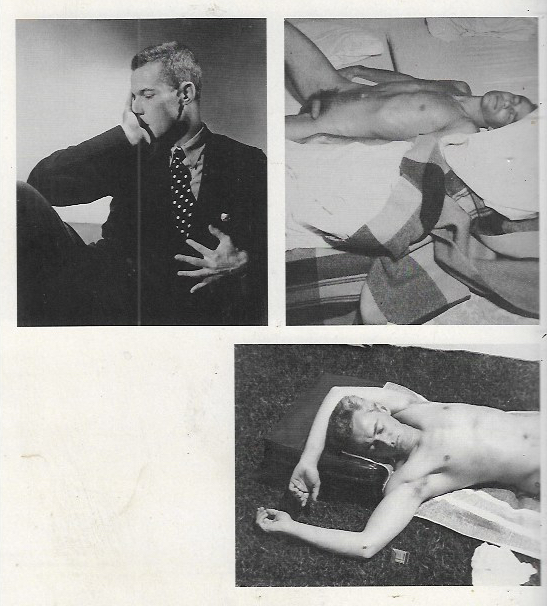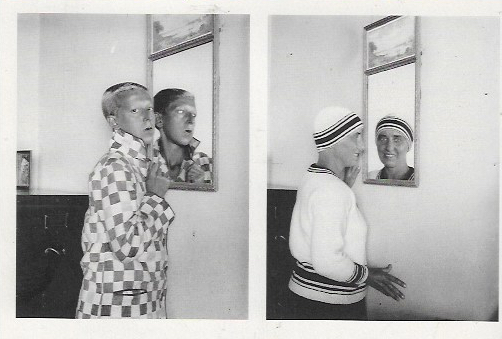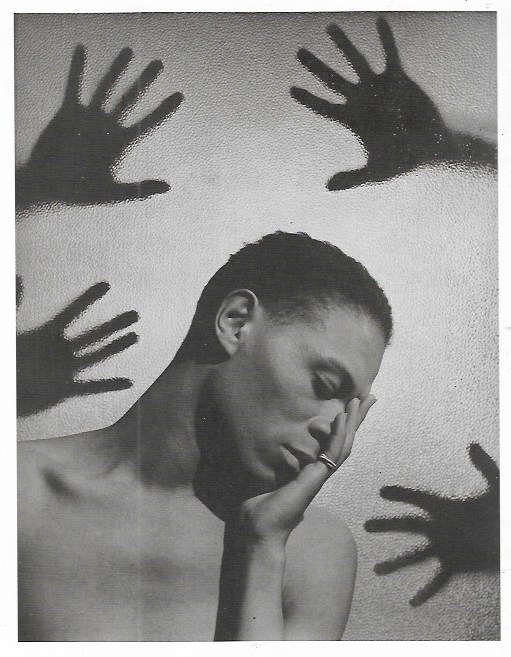★★★★★ | Modern Couples: Art, Intimacy and the Avant-Guarde
WET DREAMS DIVERSITY!
BOOK & EXHIBITION: Modern Couples: Art, Intimacy & the Avant-Garde (Prestel Publishing, £45) 5 Stars! Eclectic Eroticism!
What is love? A closeted wank in a glory hole? Romeo and Juliet’s death pact? Bosie and Wilde’s co-dependency? Or – more unusually – gay star Lou Reed’s liaison with MTF transwoman Rachel? None of these? Oh, get real – me, I say all of them! How dare any single human being, institution or government have the audacity to dictate the shape, form and expression of pure, mutual bliss?
But – inexplicably – every known form of unorthodox love is under unprecedented assault by a savage tsunami of spiritual and social bigotry masquerading as sacred self-righteousness. In Brazil, Bolsonaro’s freshly reinvigorated cutting-edge fascism, Russia and Chechnya enact vile, anti-gay torture pogroms, while Trump’s shockingly irrational resistance to trans rights and gay marriage threatens sexual freedom itself.
In every case, there’s a suspiciously defensive denial of human sexual plurality, that latent potential in every individual ever born, whether blinded by self-induced, MAGA myopia or not.
So, praise indeed to London’s Barbican, currently flipping two highly assertive and aesthetic fingers up to the furious intolerance threatening to drown sexual diversity discourse. The event? Modern Couples; Art, Intimacy and the Avant-Garde, which ran to January 27th, a startlingly innovative exhibition superbly replicated in the accompanying book from Prestel Publishing.

And Modern Couples couldn’t be more culturally appropriate. With referrals soaring in every gender clinic worldwide, and gender-variant, non-binary and agender platforms mushrooming exponentially, it’s a perfect moment to artistically challenge sexual and biological essentialist stereotypes.
Quite frankly, there haven’t been such fruitful, virtuoso assaults on patriarchy and chauvinism since Bowie’s Ziggy Stardust rock-messiah intrigued the pan-curious genitals of 1970s teenagers worldwide. And what shockingly exotic pansexual prophets we’re currently gifted with; leading the pack, there’s Lady Gaga, stealing the crown of polymorphous perversity from previous scene-queen Madonna, and Bitch! Dyke! Fag-Hag! Whore!, Penny Arcade’s perpetually relevant rite of interactive, sexual awakening and liberation. The UK’s equally blessed; we have the gloriously unfettered epiphanies of agender diva David Hoyle, the high-fashion media frenzies sparked by Monroe Bergdorf, and – less interestingly but arguably as provocative – the timid, opportunistic, non-binary cliche on autopilot, Travis Alabanza. I mean, come on – a burger thrown, with allegedly transphobic intent, hardly matches Tennessee Williams’ scathing dissections of performative divas as subject matter!
So let’s applaud the Barbican’s exemplary, multisexual and multicultural values which have led to such a startlingly on-trend celebration of sexual diversity. But, be prepared – the book, as was the exhibition, is exhaustive, not to mention exhausting, so ration yourselves to brief bedtime reading to avoid genital options overload!
Sadly, it’s impossible to do full -or even partial – justice to such overwhelming subject matter, especially in a brief review, so I’ve chosen to focus on just four of the marvellously atypical couples out of the total fifty-seven. First, there are the life-long, lesbian liaisons of Romaine Brooks, a pivotal member of salon doyenne Natalie Barney’s infamous Parisian, ladies-only soirees, which, intriguingly, included Dolly Wilde, Oscar Wilde’s knock-out drops addicted niece.
Brookes – quite fittingly – was obsessed with the Marchesa Casati, a fabulously wealthy, freakishly tall socialite who’d dedicated her life to becoming an eccentric, living work of art, and was as elegantly emaciated as a filigree dildo. There’s a rivetingly severe, full-length painting of a nude Casati that exemplifies Brook’s style, painted with such luscious attention to skin textures one can almost relive Brook’s velvet, probing tongue cascading back and forth in Casati’s trembling, point-of orgasm crevice. It’s a lush, but suggestively non-specific art that echoes lesbian desire itself, a haptic, tactile exploration where ego and one-sided selfishness are submerged in an ocean of mutual pleasuring.
How very different, then, to gay male lust, almost inevitably sparked and ignited by visual cues, as in the arrestingly modern photo-studies of George Platt Lynne. A huge influence on, and comprehensively anticipating Robert Mapplethorpe by decades, his aggressively sexual chiaroscuros – suggestive erotic shadowing – make his loving studies of Greek-god perfect hunks throb with the immediacy of superb, arthouse porn.
Frankly, it’s the blatant need in these shots – so furiously kinetic and psychologically pumping – that so shrewdly captures and freezes textbook male lust on the page; it’s as in one’s face as a patiently erect penis dribbling with pre-cum waiting its’ turn at a bath-house orgy. Who, possibly, could resist the charms of Lynne’s angelically louche rentboys, posed to sensuous perfection? Utilising a forensic finesse worthy of fine art, Lynne legitimised and consolidated the notion of transcendent, homosexual love in an aesthetic lineage stretching back to the pre-Wilde concepts of ‘Uranian’ thinking, and the mutually male love poetry of Walt Whitman. Impressed? You should be – Lynne was the killer Caravaggio of lens-fuelled libidos, the master voyeur of vicarious arousal!
Pleasingly, Modern Couples takes its’ inclusivity very seriously, so what a delight to have the singular story of Gerda Wegener and Lili Elbe – famous from the recent movie The Danish Girl – properly explored. A nascent transsexual – not even self-diagnosed until adulthood – Lili Elbe’s pioneering, gender voyage was initiated by her female lover, Gerda Wegener, encouraging her to dress en femme for portrait modelling. With an unsuspected, psychological femininity now fully untapped, Lili eventually progressed to primitive ovary implantation, the complications from which eventually killed her.
Still, what’s often dismissed by bigoted critics as crude, surgical manifestation of deluded gender convictions – aka sex reassignment surgery – has since saved tens of thousands from once suicidal despair. And truthfully, Wegener’s portraits of Lili stunningly capture an ineffable androgyny, a jaw-dropping wonderland of the fascinating borderlands – and their gradual, transitional erasure – between strict definitions of male and female. In Wegenger’s canvases, one glimpses a sexuality thrillingly cut loose from genital specifics, an all-encompassing, erotic miasma that can colour an entire world with sensual potentials.

One further lesbian couple – Claude Cahun and Marcel Moore – both prefigure and make redundant the modern rise of titillating, sexual selfie culture. Who needs a non-stop tidal wave of desperate dicks and flabby breasts and butts? Adopting a far healthier psychological perspective – dignity – Cahun and Moore bewitchingly transformed their mutual, life-long arousal into bravura, photographic icons of their then marginal, and socially dispossessed, sexuality. And early shots of the couple, especially, transpose their fleshy liaison into maverick, outsider tropes; specifically, characters from the Commedia del’arte, the theatrical epitome of misrule and disrupting the prevailing, social status quo.
Strikingly timeless, the images brand themselves on our watching minds with the cheeky aplomb of a youthful Jean-Paul Gautier, who Cahun, quite uncannily, resembles in one shot. Unsurprisingly, both Cahun and Moore’s picture studies drip with erotic mystique; after all, who but a woman would instinctively know another woman’s gateways to shockingly sexual joy?
And that same, charged magic is apparent in every example of Modern Couples’ gay, male partners; arguably, only male fingers can infallibly detonate the explosive euphoria of a fondled penis-tip. Forget bigoted dismissals of same-sex love as pathetic, narcissistic examples of arrested development, and proxy masturbation to one’s mirror image; on the contrary, there’s a pitch-perfect resonance of desire, arousal and consummation, one unfettered by pointless guilt or mismatched, biological imperatives that so often jar the intimacy between opposite sexes.
Quite triumphantly, gay relationships are often stories of hugely soaring passions – hello, Oscar and Bosie. Almost effortlessly, they defy not only social and religious bigotry, but the arid reductionism of reproductive lust, and create ingenious alternatives to the dull limitations of functional, male/female sexual frictions. And surely, don’t the only limits to eroticism lie in the imagination itself – or its’ absence? Ah, dear, dear sexual diversity – it’s the perfect mindset for human happiness!
Available to purchase now | Information on the Barbican’s Exhibition
Photos by permission/supplied

